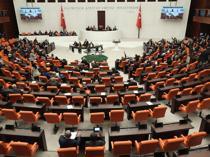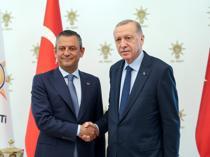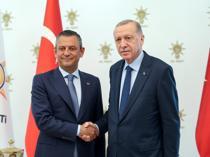Questions still linger on downed Turkish plane
ANKARA - Hürriyet Daily News

Turkish RF-4E warplanes are seen on a surveillance task in this file photo. A defense industry source says the way a RF-4E jet was downed is still unclear. DHA photo
Questions surrounding the downing of a Turkish RF-4E warplane on June 22 still linger, despite a recent government report pointing to a Syrian air defense missile that did not directly hit the plane.The presence of a Russian fleet in Syrian territorial waters is stirring up questions over the report issued Sept. 19 by the Turkish Chief of General Staff Military Prosecutor’s Office about the downing in the Mediterranean Sea. “If we wind back the film from the beginning and analyze it in a timeline, you will realize that some parts are still missing,” a well-informed source from the defense industry, who did not want to be named, told the Hürriyet Daily News. “The plane was shot down north of Syria, but it was a Lebanese media outlet that first announced the news, not the Syrians. One must ask how Lebanon learned of the event before the Syrians. Secondly Syrians stated they had no radar image, the plane was hit by an antiaircraft weapon as it was flying near Syrian territory.
The Syrian air defense system is one of the most effective ones in the Middle East. Israel used the most advanced electronic jamming technology to attack in Operation Orchard. Their statement is not convincing unless similar jamming was not active,” the same source said, recalling that Syrians had guided Turkish search and rescue teams to the correct region of the sea. “It means their radar was able to follow the plane closely.”
“Russia claimed to offer radar images to Turkey. We know that one of the most powerful ships from the Russian fleet, Admiral Chabenenko, was in Syrian waters. It is an Udaloy II class destroyer. It has the highest technology to control airspace,” he said, adding that if the information is true it means that Russia could have also followed the plane.
“The existence of a Russian fleet and its capacity to hit a Turkish plane bring some hesitations to mind,” the source said, explaining why Turkey may not have seen radar signals of missiles or the missiles’ own radar signals. Radar signals of missiles are the images of a missile on radar, but the missiles’ radar signals are the signals that missiles transmit and Turkey receives.
“If we are certain that the plane was downed by a blast effect, then we are talking about a missile. It also brings the question of type. Which missile? A long-range missile fired from Syrian territory would have appeared on Turkish radar. Short-range may not appear on radar, but it could not reach the plane either,” he said. “We have to ask what kind of medium-range missile Syria has in its territory and what kind of short- or medium-range [missile] can be fired from the sea,” he said, emphasizing that a short- or medium-range missile fired from the Mediterranean Sea may not be visible to Turkish radars as geography does not always allow that. “This option brings the Russian fleet to mind as a Syrian navy barely exists.”
Tor missile?
The Tor missile system is an all-weather low-to-medium altitude, short-range system designed to engage air targets such as airplanes and even weapons. The navy version is commonly known as the SA-N-9 “Gauntlet.” This missile can currently be launched from the ship Admiral Chabenenko. Due to its high capacity for maneuvering, speed and accuracy of hitting its target, it is almost impossible to avoid a Tor missile. The proximity fuse that downed the Turkish plane can be installed on this missile as well.
















